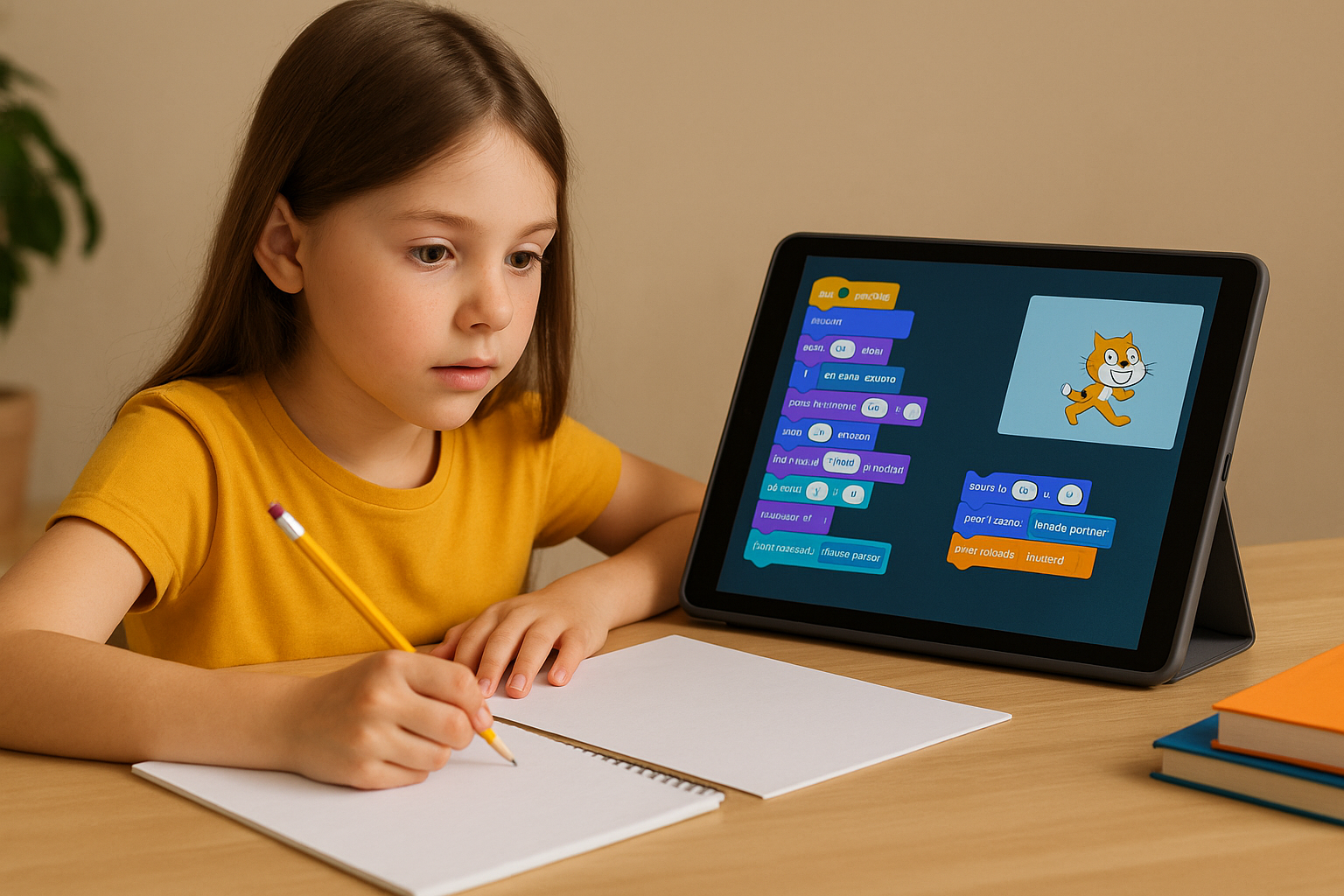If you’re looking for a flexible, high‐quality way for your child on the Central Coast to learn coding, an online class could be the smart move. Whether your home base is Erina, Terrigal, Avoca, Gosford or further out, online coding lessons give you access to the same skill‐building tools without the commute.
Best Online Coding Kids in NSW
Online coding classes have several benefits that align well with modern family needs:
- Convenience: Your child participates from home or another comfortable location, which reduces travel time and makes fitting lessons into your schedule easier. (MakerKids)
- Access: You’re no longer limited by local venue availability or transport; online classes can open up higher‐quality tutors or unique curriculum even in regional areas.
- Flexibility: Many online classes offer recordings, mixed session formats or more frequent terms, so your child can progress at their pace.
- Effective learning: Research into online coding camps found that, with the right setup, students achieved similar quality outcomes as face‐to‐face. (arXiv)
On the Central Coast, where travel and after‐school logistics can become a hassle, an online format helps bridge the gap.
What Kids Will Learn in an Online Coding Class
A good online coding class for kids covers more than just “how to write code.” Expect outcomes such as:
- Logical thinking and sequencing – coding trains kids to break down tasks, sequence steps and debug when something doesn’t work. (robowunderkind.com)
- Creative problem‐solving – they’ll be building, experimenting, often turning ideas into interactive projects or games.
- Digital literacy – understanding how technology works, not just using it. That’s a big advantage in our increasingly tech‐rich world. (softwareacademy.co.uk)
- Persistence & resilience – coding involves testing, failing, retrying. These are outcomes built into the process.
- Collaboration & communication – many online classes include group work, pair‐coding or peer feedback.
How Online Classes Are Structured
Here’s a typical flow for an online kids coding class:
- Introductory module – the tutor or platform explains the session objective, sets clear tasks and ensures all students are logged in and comfortable.
- Project work – kids either use block‐based tools (for younger ages) or beginner text‐coding (for older) to build a small interactive project (game, animation, app prototype).
- Live interaction / mentoring – the tutor checks in, hosts live Q&A, monitors progress, helps debug.
- Showcase & feedback – participants share their project, receive feedback, reflect on what worked and what they’ll try next.
- Next‐step challenge – to maintain momentum, there may be a task between sessions or optional extra resources.
This structure works well online when the class size is manageable, the tutor keeps engagement high and the platform supports interaction.
Who It’s For & Age Ranges
Online coding classes can be suitable for children roughly aged 6 to 15, with beginner through intermediate levels. Key points:
- Younger kids (6–9) often start with block‐coding (drag & drop) so they understand logic without frustration.
- Middle ages (9–12) may transition into text‐coding challenges, incorporate game design, more freedom.
- Older kids (12–15+) may explore web‐technologies (HTML/CSS/JavaScript), simple app development or even collaborate remotely.
- Beginners and those with some prior experience both benefit, provided the class groups are well structured.
Why the Central Coast Families Should Consider Online Coding
For families on the Central Coast the case is strong:
- The region may have fewer in‐person classes than a large city, so online options widen the pool.
- Weather, transport, after-school commitments can make in‐person lessons tricky; online avoids those constraints.
- Your child can still join and connect with peers locally or from broader geography, maintaining social as well as learning benefits.
- You gain scalability: maybe your child starts online and later transitions into local in-person workshops/camps when convenient.
How to Choose the Right Online Coding Class
Here’s what to look for to ensure you pick a strong online coding class for your child:
- Age‐appropriate curriculum – Make sure the class suits your child’s level (beginner vs experienced).
- Live instructor support – Not just pre‐recorded videos; live interaction helps engagement, accountability and progress.
- Smaller group size – Too big and your child risks “just another face” and may lag behind.
- Project‐based outcomes – The child should finish with something they built (game/app/animation) rather than passive watching.
- Clear schedule & structure – Know when sessions start, how long they last, what tech is required.
- Local timezone compatibility – Since you’re on the Central Coast (AEST/AEDT) ensure the class schedule aligns so your child isn’t at odd hours.
- Trial or sample lesson – Allows you to test fit without full commitment.
- Good reviews/testimonials – What past students or parents say matters.
Practical Tips for Getting Started
- Make sure your child has a quiet, comfortable space with decent internet for the online class.
- Clarify what software or tools will be used and if any kits are needed.
- Talk with your child ahead: “You’re going to build something this week — what do you imagine it will be?” This primes their mindset.
- Check times, term lengths, starting dates early — online spots can fill quickly.
- After a few sessions, ask your child to show you what they made and what they found hard — this reinforces the learning and gives you insight.
Top Online Kids Coding Class in Australia
If you’ve been exploring online kids coding classes in the Central Coast region, this is a golden opportunity. It’s not just about screen time—it’s about creation time. Your child can gain logical thinking, creativity, confidence and tech-literacy from the comfort of home, yet still connect with a broader world of learning.
Choosing the right class means picking one that suits the age, the format, the outcomes and your schedule. Get it right and your child won’t just follow tech—they’ll master it.
